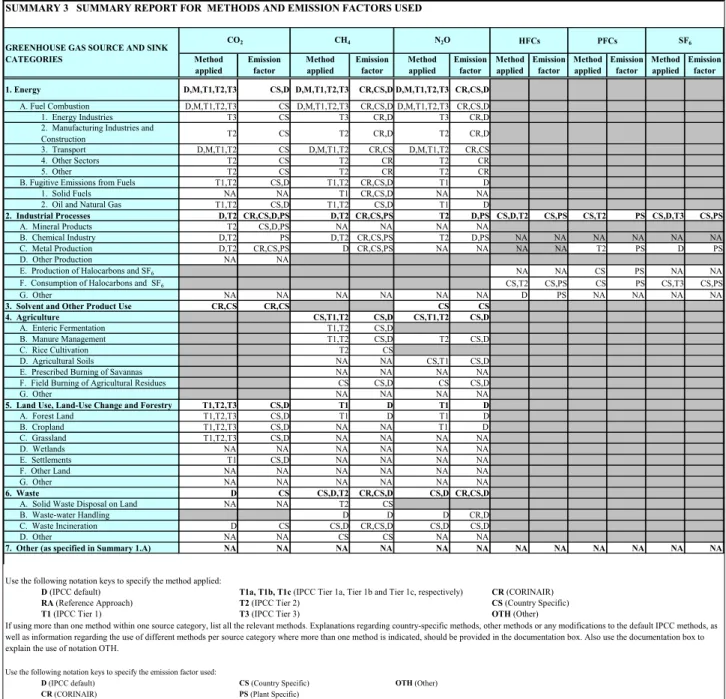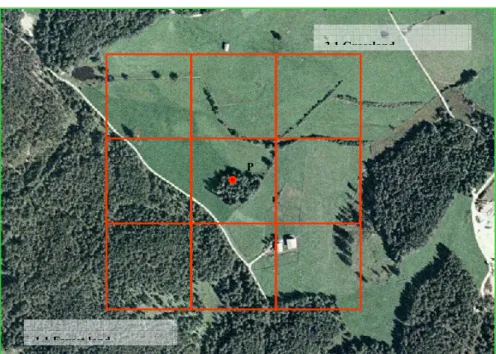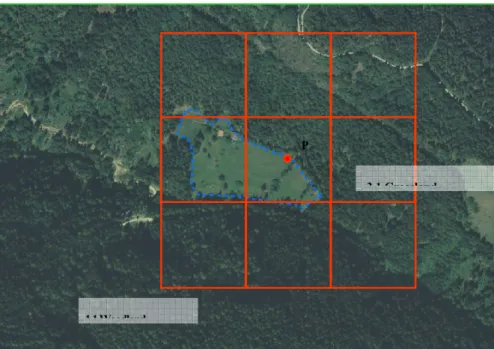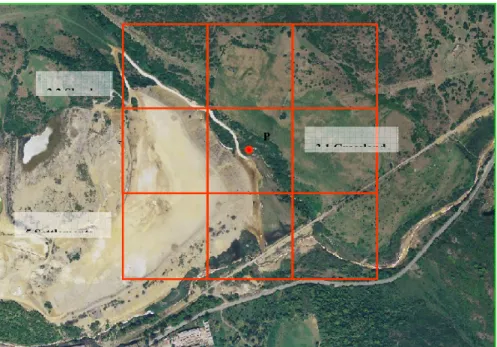The Parties to the Convention have adopted the Kyoto Protocol, which lays down legally binding commitments to limit greenhouse gas emissions for the period from 2008 to 2012, with reference to 1990 emission levels. For Italy, the burden-sharing agreement of the EU, as set out in Annex II to Decision 2002/358/EC and in accordance with Article 4 of the Kyoto Protocol, set a reduction target of 6.5% during the commitment period, compared to 1990 levels. In addition, Article 5.1 of the Kyoto Protocol requires Parties included in Annex I to the Convention to have in place, by the end of 2006 at the latest, a national system for estimating anthropogenic greenhouse gas emissions by sources and removals by sinks, and for reporting and archiving the results.
DEFINITION OF NATIONAL SYSTEM
As a party to the Convention and the Kyoto Protocol, Italy is committed to developing, publishing and regularly updating national greenhouse gas emission inventories and formulating and implementing programs to reduce these emissions. The Decision of the European Parliament and of the Council on a mechanism for monitoring greenhouse gas emissions in the Community (280/2004/EC) requires Member States to set up a national greenhouse gas inventory system by the end of 2005 and the Commission to adopt no later than 30 June 2006 the EC inventory system. The national system guarantees that the data not only meet the quality requirements, but are also officially approved by governments.
GENERAL FUNCTIONS
The national inventory is updated annually to reflect revisions and improvements in methodology and the use of the best available information. ISPRA, as Administrator of the Registry, becomes responsible for the management and operation of the Registry, including the obligations of the Kyoto protocol. The register was linked to the International Transaction Register (ITL) of the UNFCCC secretariat in October 2008.
SPECIFIC FUNCTIONS
Inventory planning
Emissions data are also published by the Ministry of Environment, Land and Sea in the Reports on the State of the Environment (MATT, several years) and in the National Communications (MATT, 2002; MATTM, 2007; MATTM, 2009). as in the report Demonstrable Progress (MATT, 2006). The quality of the inventory has also been improved through the organization and participation in sector-specific workshops. In 2007, a specific session was devoted to the National Emission Inventory as part of the National Conference on Climate Change.
Inventory preparation
The inventory preparation process takes over annually; in year t, the final emissions are calculated for year t-2: in case of methodological changes or additional information, emissions are recalculated from 1990 onwards. In general, for the energy and industrial sectors, emissions data collected under the European Emissions Trading System, the National Pollutant Release and Transfer Register (EPER/E-PRTR) and the Large Combustion Plant Directive (LCP) have led to significant developments. in the inventory of the relevant sectors. Table 1.1 summarizes the activity data and sources used in the inventory.
In Table 1.2, a summary of the methods and emission factors used in the compilation of the Italian inventory is reported. A more detailed table describing methods and emission factors for the key categories of the national inventory for the year 2010 is reported in the National Inventory Report as an appendix (ISPRA, 2012). Two different approaches are reported in the IPCC 2006 guidelines according to whether a country has performed an uncertainty analysis of the inventory or not: Approach 1 and Approach 2.
In addition to the new year, the inventory is updated annually by revising existing data on activities and emission factors to incorporate new available information. Descriptions and rationales for current as well as planned improvements to the inventory are also provided in the annual QA/QC plan (ISPRA, multi-year [b]). When appropriate changes to methodologies and emission estimates for key categories are foreseen, new methodologies and emission factors are chosen after consultation with national experts, also within the framework of national sectoral expert panels.
The QA/QC plan is updated each year to re-evaluate the quality objectives of the inventory.

Inventory management
In fact, the annual QA/QC plan contains all the improvements planned to the inventory and references to the relevant documentation and information supporting the modifications at sectoral and general level. Changes are based on the observations of the different stock review phases (internal and external evaluations by third parties involved in stock issues), the review feedback received from the UNFCCC Secretariat on the previous inventory or from the European internal review, and other collected information . Internal review is also undertaken, comparing different methodologies, before changes are incorporated into the inventory.
Regarding a baseline review of the inventory provided by an independent third party, possibly prior to the submission of the inventory, as required by the UNFCCC guidelines, financial resources have been made available by the Ministry of Environment, Land and Sea and various proposals are under examination. This activity will be implemented within the Kyoto period and will start as soon as the tendering procedure is completed. This database consists of a number of records that refer to all the documentation used during the compilation of the inventory, for each sector and year of delivery, the link to the documents available electronically and where they are stored, as well as internal documentation on the procedures of SC/QC.
The archive and the 'reference' database are fully accessible to the assessment team and ISPRA makes this information available, as part of the official UNFCCC assessment process under the Convention and the Kyoto Protocol, for the requests for clarification of inventory information in the different phases. of the assessment, in a timely and complete manner. EU, 2004, Commission Decision of 29 October 2004 laying down rules for the implementation of Decision 280/2004/EC of the European Parliament and of the Council on a mechanism for monitoring Community greenhouse gas emissions and for its implementation of the Kyoto Protocol. IPCC IPCC Guidelines for National Greenhouse Gas Inventories, prepared by the National Greenhouse Gas Inventories Program, Eggleston H.S., Buendia L., Miwa K., Ngara T.
Guidelines for national systems under Article 5, paragraph 1, of the Kyoto Protocol contained in document FCCC/KP/CMP/2005/8/Add.3.
THE NATIONAL REGISTRY FOR FOREST CARBON SINKS
The National Land Use Inventory (IUTI) aims to identify land uses and changes in land use across the national territory. IUTI will provide data regarding areas under forest area category (art. 3.4 of KP) and on land under conversion to and from forest area categories (art. 3.3 of KP). The IUTI is based on a survey of sampling points throughout the Italian national territory, considered as a population of points, and on the classification of the land use combined with the sampling points.
Using on-screen interpretation of digital orthophotos (VOLOITALIA1 and TERRAITALY2), land use is classified with a high degree of accuracy and precision, as required by IPCC standards. IUTI will annually provide time series of dedicated areas for each land use category and each subcategory of land use change to and from forest land use, in the KP reporting. The IUTI will provide data, at the NUT2 level, of the investigated variables (ie forest land category and any sub-categories in conversion to and from forest land).
In terms of land use classification, the first step is related to a land classification, after the artificial land level; the aim is to distinguish between terrestrial areas significantly modified by human activity, with an evolution strongly conditioned by mainly residential and productive activities, and terrestrial areas characterized by a high degree of naturalness, in which natural evolution, although conditioned by human action, is still exercised. a dominant effect in determining dominant soil characteristics. The operational procedure consists in the digital processing of orthophotos, taking into account the sampling points: for each point identified in the territory with coordinates in a known reference system, the category of land use, defined according to the classification system, must be determined. The National Carbon Stock Inventory is a sample of carbon stocks related to different land use categories.
ISCI will annually provide time series of carbon stock levels and carbon stock changes for the forest land category and for the subcategories of land converted to and from forest land to other uses. Regarding the forest land category and any other category in conversion to and from forest land, the NFIs will ensure the spatial coverage, by providing carbon stock data, at NUT2 level. CIFI will cover all the national territory and will provide geographically referenced data on burnt forest land remaining forest land areas (art. 3.4) and on land converted to forest land burnt areas (art. 3.3).

THE NATIONAL REGISTRY
The software development has always been done in close contact with the ITL administrator and the development team of the UNFCCC Secretariat during the development of the ITL functions. e). A description of the procedures used in the National Registry to minimize inconsistencies in the issuance, transfer, acquisition, cancellation and withdrawal of ERUs, CERs, tCERs, lCERs, AAUs and/or RMUs 's, and replacement of tCERS and lCERs, and of the steps taken to terminate transactions where a discrepancy is notified and to correct problems in the event of non-termination of the transactions. After this, reconciliation will be performed to validate that the data is synchronized between the registry and the ITL.
As the number and size of transactions continued to grow, it was necessary to increase the stability of the system. In addition, improvements have been made to the handling of transaction messages: due to the complexity of the previous implementation and the conceptual simplicity of the requirements, it was decided to completely replace it with a brand new implementation using the new SAM service. Together these changes have resulted in increased registry reliability when running with a heavier workload.
The new message flow introduces an additional step that marks the transaction and unit blocks as represented in the acquiring registry until the acquiring registry has confirmed acceptance of the unit blocks and the ITL has completed the transaction. The purpose of the additional step is to ensure that a registry cannot transfer units received via remote transfer until the ITL completes the transaction. An example of the maintenance measures taken is the recent introduction of the background check (Finnish Security Police (SUPO)) for personnel who work with the registry and have access to the registry servers;
A list of the information that is publicly available using the National Register user interface. Non-confidential information required under decision 13/CMP.1 annex II.E, sections 44-48 is publicly available through the registry website.


